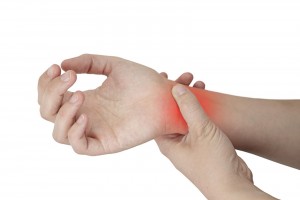When an injury occurs, it can often be difficult to determine just how severe an injury is – or even what type of an injury you have. Strains and sprains are similar but different and they can be hard to assess. A sprain or a strain of a muscle can be so intense that it can easily mimic a fracture of a bone. Even trained medical professionals will often have to rely on imaging to help them make an accurate diagnosis.
There are some common signs and symptoms that each of these injury types have that can help you in assessing just what type of injury you may be dealing with.
Here is a quick overview of what to look for:
Strains
- A strain is a stretching or tearing of a muscle or tendon. Tendons are the connective tissue that connect muscle to bone.
- There are two main types of strains: chronic and acute.
- Acute strains may happen when slipping or falling on ice, jumping or running ballistically, an awkward bend or movement during lifting a heavy object’
- Chronic strains happen over time, occurring from repetitive use activities such as golf, tennis, rowing or other sports.
- Common symptoms include:
- Pain
- Swelling
- Muscle spasms or soreness
- limited ability to move the affected area
Sprains
- A sprain is the stretching or tearing of ligaments. Ligaments are the bands of fibrous tissue that connect bones to each other throughout the body. They are most often seen in joints that have multiple normal ranges of motion such as ankles, knees, wrists and shoulders.
- Commonly caused from an acute traumatic injury or the extreme sudden stress on a joint.
- Patients often report hearing a “pop” or “crack” at the time of injury. It’s this that can cause the confusion between a severe sprain or a break. Medical imaging is often necessary to rule out a fracture.
- Common symptoms include:
- Pain
- Swelling
- Bruising
- Limited or complete inability to move the joint or bear weight
When to seek immediate medical attention for a suspected strain or sprain
If you are experiencing any of the following, an urgent trip to a medical professional is your best course of action:
- Numbness or loss of circulation in the affected area
- Inability to walk more than a few steps without severe pain
- Inability to move the affected joint area
- Pain directly over the bone
Strains and sprains can range from mild, requiring no medical intervention, to sever, requiring surgery and rehabilitation to heal properly. If you are in doubt, let a professional assess you and determine what course of action is best.
For mild to moderate strains and sprains the initial course of treatment is home care and includes:
- Rest: stay off the affected joint and allow the area to rest.
- Ice: cold helps to reduce swelling and inflammation and reduces pain. Apply ice in intervals of for 10-20 minutes, repeating for the first 2 to 3 hours immediately following the injury.
- Compression: To help with swelling and to assist in stabilizing the joint, you can use an elastic bandage to compress the area. Be sure not to wrap too tightly as you want to ensure proper circulation. If wrapping causes an increase in discomfort, numbness or if swelling increases, loosen or remove the wrap.
- Elevation: elevating the injured area (above the level of your heart) will help with swelling and discomfort.
Most mild to moderate strains and sprains heal on their own with some care and attention as noted above but if you are not seeing some improvement in pain and the ability to move and bear weight in a few days, you may want to see a medical professional to assess the injury.


